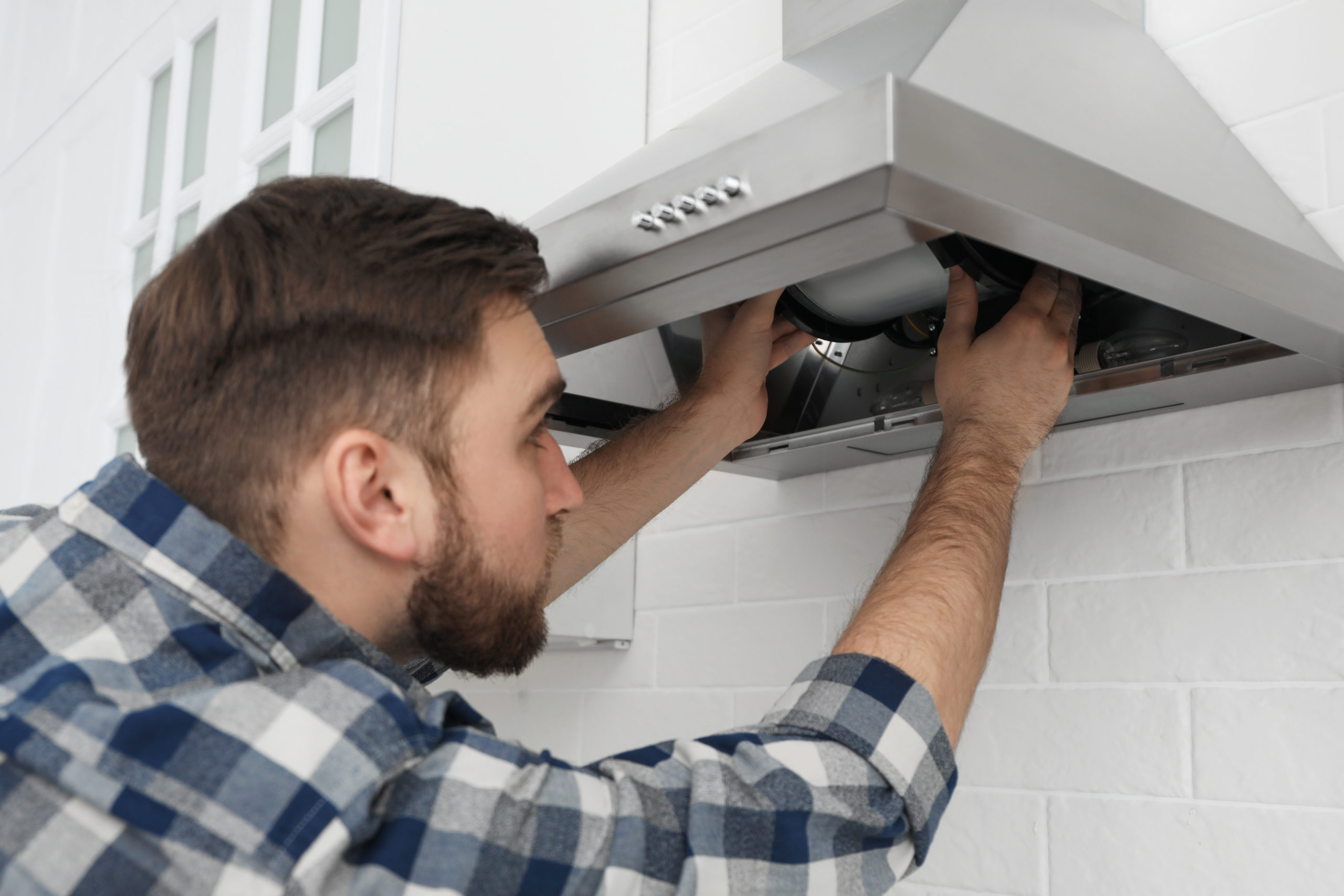The professionals at Range Craft ensure no such problem occurs but if you have an existing range vent, read on to find solutions for your home. Afterward, give our team a call to install the right components to stop the cold air.

Install Backdraft Damper
Outside, at the end of the duct attached to your range hood, is a flap designed to prevent cold air from coming through the hood. When working properly, the flap should close when the vent fan is not in use, and open to let air escape when the fan is in use. This flap can be blown open by the wind, however, and let cold air into the home. It can also be damaged by wind or birds, or come off entirely. If damaged, the flap should be replaced. If it is frequently blown open by the wind, it should be turned another direction or replaced with a spring-loaded flap that cannot be opened by the wind. If the range vent hood is under warranty, check with the manufacturer before installing a spring-loaded flap.
Install a Spring-loaded Damper
A spring-loaded damper, or flap at the end of the range hood vent, functions in the same way as a standard flap, except that it uses pressure from a spring to stay closed. This makes it difficult for the wind to open it. If a spring-loaded flap is allowing cold air in through the vent, the spring mechanism is likely damaged or broken, leaving the flap in the open position. The damper should be replaced if the spring is broken. It may also simply need to be cleaned and lubricated to open and close properly if the spring mechanism is not broken.
Improper Installation of Damper
If you didn’t have a backdraft damper installed by a professional, chances are that it could be installed incorrectly. Backdraft dampers function according to orientation, meaning improper installation can compromise the item. If your damper is installed back-to-front, it will be letting unconditioned air from outside into your kitchen and not allowing the air that your range hood is trying to exhaust out.
Damaged or Dirty Damper
If your range hood already has a backdraft damper, chances are that the damper could be bent from weather damage, or perhaps it is stuck due to grease build-up.
If you suspect the damper is damaged check on the walls or roof cap. Make sure that it is in good condition and secured to your duct. If you notice any cracks or the threads on the cap are worn, buy a replacement.
Grease, oil, dust, and other gunk can build up inside of your stove range hood over time, and so you need to be sure to open the cavity and give the whole system some TLC from time to time. If you see any heavy grease buildup, grab a kitchen degreaser and a towel and clean your damper. Heavy grease may prevent the damper from opening and closing properly, allowing cold air to sneak in your duct. Be sure to disconnect your stove from any electrical source before doing this, however—you don’t want to risk a nasty electric shock.
Not Enough Insulation
One of the most common reasons a kitchen range hood may be leaking cold air is lack of proper insulation. Even worse, a lack of insulation could cause moisture build-up and cause leakage. On colder days, the hot, steamy air being vented may be hitting parts of your piping that are freezing cold, forming into condensation, and dripping back down.
Contact Range Craft for Kitchen Range Hood Repair & Installation in New Jersey
If you’re still not sure what’s going on with your stove range hood, or you don’t quite know how to fix the issue, leave it to us! Our team of appliance maintenance and repair experts know the ins and outs of range hood systems.
